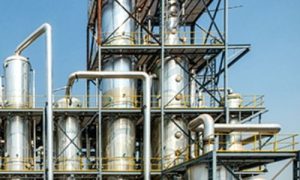DOE releases new report on pathways to commercial liftoff for SAF

The U.S. Department of Energy’s latest “Pathways to Commercial Liftoff” report highlights the potential of Sustainable Aviation Fuel (SAF) to decarbonize aviation. It emphasizes the need for significant investment in production technologies to meet 2030 goals, aiming for over 3 billion gallons of domestic SAF capacity. However, high production costs remain a major barrier, requiring federal and state incentives.
November 14, 2024
BY U.S. Department of Energy
The U.S. Department of Energy today announced the release of its latest Pathways to Commercial Liftoff report, which underscores the near-term potential for sustainable aviation fuel (SAF) to meaningfully decarbonize the aviation sector. “Pathways to Commercial Liftoff: Sustainable Aviation Fuel” analyzes the technical and commercial readiness of several SAF production pathways and highlights tangible, actionable steps that both the public and private sector can take to make the United States a global leader in SAF production as soon as 2030.
“With the aviation sector growing each year, there is no better time to invest in solutions that are both technologically and commercially ready today,” said U.S Secretary of Energy Jennifer M. Granholm. “The latest in DOE’s Liftoff series, this report lays out the critical innovations and investments needed to drive down costs and further scale SAF production—paving the way for a cleaner, more competitive aviation sector that will benefit communities and businesses nationwide.”
DOE’s Pathways to Commercial Liftoff report provides a shared foundation of insights and analysis to guide public and private sector efforts in scaling transformative technologies and accelerate the nation’s clean energy transition. The Liftoff series fosters alignment on market challenges, investment needs, and critical pathways for deploying sustainable solutions, such as SAF, at scale.
Key findings from the report include:
- Announced projects represent over three billion gallons of annual domestic SAF production capacity by 2030, surpassing the U.S. SAF Grand Challenge target. This announced capacity correlates to over 10% of projected U.S. jet fuel demand, over $44 billion of investment, and over 70,000 jobs across the SAF value chain through 2030.
- SAF liftoff by 2030 will require accelerated deployment of production technologies and feedstocks that are readily available today. In parallel, investments in emerging SAF technologies (e.g., next-generation feedstocks, innovative SAF conversion technologies, etc.) are essential to ensure that 100% of jet fuel can be sustainable by 2050.
- The biggest barrier to SAF’s scale up is cost. SAF currently costs two to ten times more than fossil jet fuel, depending on the feedstock and conversion technology used to produce it. Federal and state incentives play a necessary role in helping make SAF more cost competitive with fossil jet. However, sustained price premiums have limited airlines’ voluntary offtake.
- Long-term offtake agreements will establish the demand certainty needed both to improve financing terms and stimulate investment across the SAF value chain. Airlines and producers can extend terms or increase volumes by activating third-party offtakers that are willing to pay for the environmental attribute (carbon abatement) of this low-carbon fuel to reduce their Scope 3 emissions. This activation will require the incorporation of SAF in Scope 3 emissions standards.
- SAF liftoff will require international policy coordination, including alignment on carbon accounting, feedstock traceability, and book and claim systems.
The SAF Liftoff report complements two conditional commitments announced by DOE’s Loan Programs Office (LPO) in October 2024 to scale domestic SAF production. LPO’s $1.44 billion loan guarantee to Montana Renewables, LLC, if finalized, will help finance the expansion of a renewable fuels facility in Great Falls, Montana, that will utilize vegetable oils, fats, and greases to produce SAF, renewable diesel, and renewable naphtha. LPO’s $1.46 billion loan guarantee to Gevo Net-Zero 1, LLC will help finance the first of a kind large-scale corn starch-to-jet fuel facility in the United States. Located in Lake Preston, South Dakota, this facility will source U.S.-grown, low-cost, low-carbon field corn and will use carbon capture and sequestration and renewable power to lower emissions.
To read more about Ethanol Industry News, continue reading Agriinsite.com
Source Link : Ethanol Producer

















